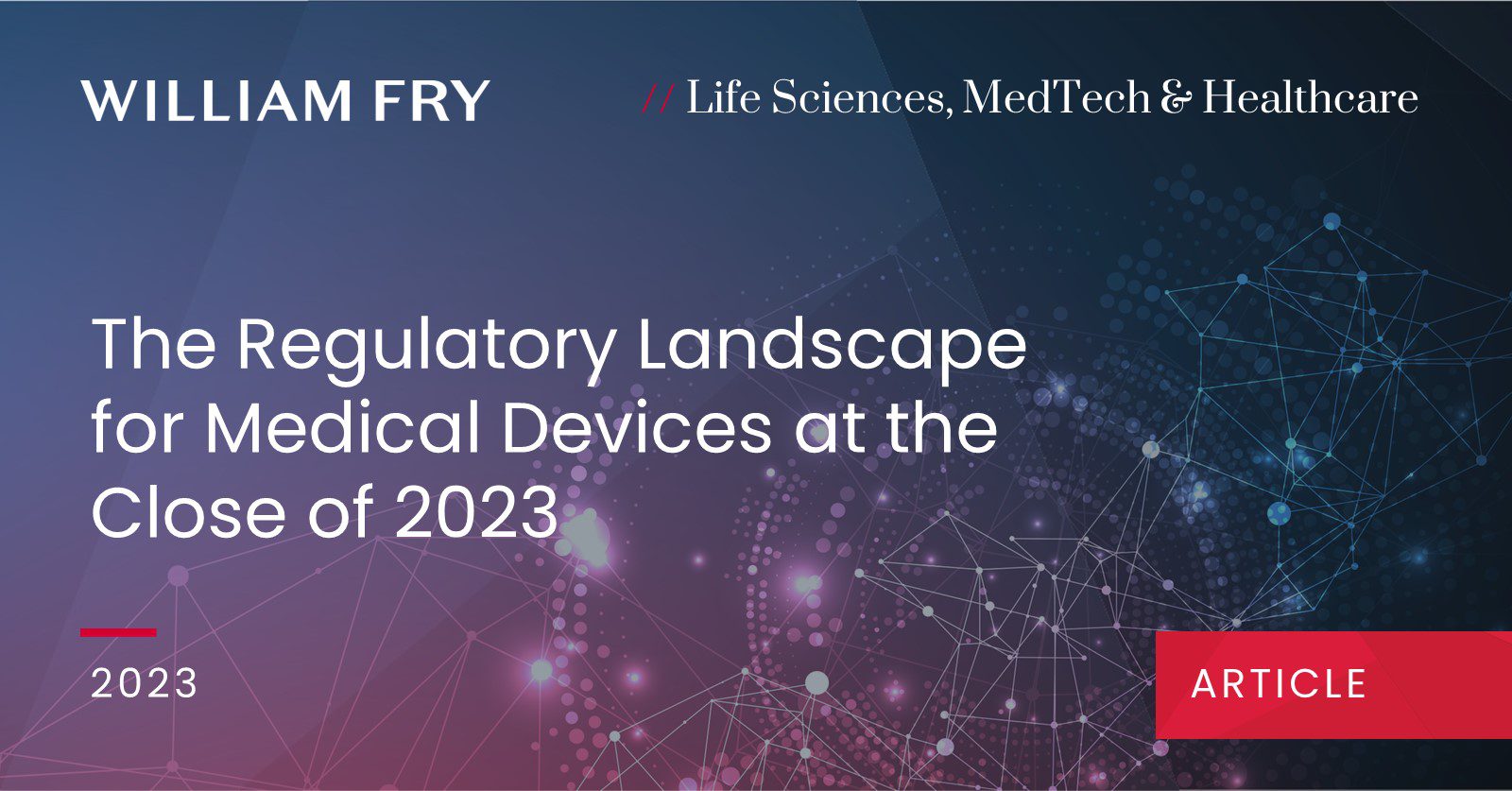The medical device landscape in the EU underwent significant regulatory developments over the past few years. 2024 is going to be another year of change for the sector.
The adoption of Regulations (EU) 2017/745 (MDR) and 2017/746 (IVDR) (together the Regulations) has changed the regulatory framework for medical devices and in vitro diagnostic devices in the EU. This space will be further impacted by several pieces of legislation coming down the tracks. At the close of 2023, we assess the current position and look forward to what is on the horizon.
MDR and IVDR – where are we now?
The MDR and IVDR were adopted to enhance both safety standards, and the scope for innovation for medical and in vitro diagnostic devices. There have been some teething problems in their implementation. Due to a relatively slow start in the designation of Notified Bodies responsible for assessing conformity under the Regulations, and the consequent impact on the ability to obtain conformity certificates before the expiry of the original transitional periods, the EU extended the MDR transition periods from a deadline of May 2024 to either 2026, 2027 or 2028 depending on the device type. Our article in March brought you further details on these extensions and an industry analysis (here).
Efficiency in the designation of Notified Bodies has improved, with 40 notified bodies designated under the MDR and 12 under the IVDR as of November 2023. This month, the European Commission adopted legislation designating five EU Reference Laboratories (EURLs) under the IVDR, to carry out functions such as performance and conformity assessment of high-risk in vitro diagnostic devices. To avoid disruption to ongoing conformity assessment, only new applications submitted to notified bodies after the transition period will be assessed by the EURLs.
The Medical Device Coordination Group (MDCG) has published several guidance notes to ensure a smooth transition to the new regulatory regime. In its most recent guidance note on “Ensuring Timely Compliance with the MDR and IVD (accessible here), the MDCG highlights that the number of applications to notified bodies and certificates issued under both regulations (the IVDR in particular) remains low. Given the timing for conformity assessment is longer than under the previous regulatory framework, manufacturers are encouraged to submit their applications as soon as possible to capitalise on the extended time. The guidance note also addresses Notified Bodies, encouraging them to streamline their procedures and improve their conformity assessment capacity. Notified Bodies and manufacturers are encouraged to provide data to the MDCG to allow it to monitor the progress of the implementation of the MDR and IVDR and allow member states and the European Commission time to prepare for changes in medical device ranges.
For further information on the recent update to the MDCG’s manual on borderline and classification under the MRD and IVDR, see our October article, here.
The Revised Product Liability Directive
Impending relevant European legislation includes the Revised Product Liability Directive which may increase the risk of litigation exposure. This Directive, which is currently being negotiated, proposes to bring new products and economic operators within its scope, extend limitation periods and ease the burden of proof for plaintiffs alleging product liability of a medical device. Manufacturers and suppliers of medical devices, pharmaceuticals and health-tracking software will need to be aware of their increased risk under these proposed changes. For more information on the Revised Product Liability Directive, see our article here.
The AI Act
Medical device companies using artificial intelligence (AI) systems must be aware of the AI Act, the EU’s regulatory framework to harmonise rules on the development, deployment, and use of AI technologies in the EU. Under the AI Act, AI systems which are used in medical devices will largely be categorised as high-risk AI systems. This means that providers, importers, distributors, and users of such systems must adhere to strict obligations relating to risk and quality management, human oversight, transparency and compliance. Failure to do so could result in substantial fines of up to €35 million or 7% of annual turnover. For further information on the AI Act, the text for which has recently been agreed by EU lawmakers, please see our article here. You can also watch our short video briefing on the AI Act on our EU Technology Regulation Video Portal, here.
The AI Liability Directive (ALID)
The purpose of the AILD (which compliments the AI Act) is to provide uniform rules for certain areas of non-contractual civil liability for damage caused by AI systems. The AILD is currently making its way through the European legislative process. It provides that defendants must disclose relevant evidence to plaintiffs regarding high-risk AI systems alleged to have caused damage. It also proposes to establish a rebuttable presumption of a causal link between non-compliance with the AI Act and an act or omission of an AI system which leads to damage. For high-risk AI systems, this presumption will not apply where it is shown that the plaintiff has access to sufficient evidence to prove the non-compliance. To limit liability, medical device companies should ensure they comply with disclosure obligations under the AILD and the AI Act generally.
For more information on the AI Act, the AILD and the Revised Product Liability Directive in the context of the adaptation of liability law to technological advances, please see our webinar held earlier this year in association with Mondaq, here. You can also watch our short video briefing on the AILD on our EU Technology Regulation Video Portal, here.
Conclusion
The last few years saw significant changes in the regulatory landscape for medical device companies and with upcoming changes with respect to liability for defective products the pace of change is not expected to ease. For advice on how these changes affect your business, please reach out to Charleen O’Keeffe, David Kirton or any member of our Life Sciences, MedTech & Healthcare sector group.
Contributed by Aisling Casey, Louisa Muldowney




